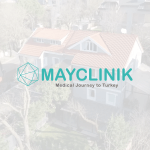Deciding to have a tummy tuck surgery was a huge deal. You spent time thoroughly researching the procedure and choose a good surgeon. Even 12 months have passed, and you don’t like the results, don’t worry about it. Tummy tuck revision is a surgical procedure that helps to address problems that have arisen from the initial tummy tuck surgery.
What is a tummy tuck revision?
Tummy tuck surgery (also called abdominoplasty) is a surgical procedure that removes extra fat from the lower and middle abdomen. Tummy tuck surgery can also flatten the abdominal area and tighten separate abdominal muscles. After tummy tuck surgery, people recommend having a tummy tuck revision surgery for different reasons, including Post-operative weight loss or weight gain or weight loss, a new pregnancy, or because they’re unhappy with the results from the first tummy tuck procedure.
Why you may need to get tummy tuck revision surgery?
1. Scar revision: The final look and outcome of your tummy tuck scars will depend on the genetics of your scar formation and how your body heals. Although there are unique surgical procedures to reduce scarring, scar thickening and malposition can still occur. In certain cases, the Cosmetic Surgeon will be able to change the location of the scar, but this will depend on the skin tone and the amount of residual skin you have.
2. Umbilical distortion: Your umbilicus (belly button) can become distorted due to;
- A visible scar around the umbilic will become noticeable if the umbilic is not rendered deep enough.
- Umbilical stenosis. This occurs when the umbilicus becomes small after surgery.
- An elongated slit emerges when too much skin has been removed, increasing the tension of the closure. When a new umbilic is formed, the vertical pull of the skin causes the shape to change from a round to an elliptical and elongated shape.
- Extended umbilics can occur for a variety of reasons, including stretched skin in the radial direction, due to an inherent laxity of the skin, or if the new umbilic is not properly dimensioned. It is important to remember that the belly button should be no larger than 1.5 cm in vertical and horizontal measurements.
3. Unsatisfactory overall appearance of the tummy tuck: Some patients with a tummy tuck need to have raised abdominal skin to recreate the contours of the abdomen. It is important to remember that if you need to do so, the abdominal scar would be higher than average due to excess skin that has been already excreted.
4. Epigastric bulginess: You would have a bulging abdominal area if the stitching of the abdominal wall muscles above your belly button has not been appropriate. To address this problem, your Cosmetic Surgeon will suture the abdominal wall from the lower part of the chest to the lower part of the abdomen.
Experience is the most significant factor in the choice of a cosmetic surgeon for any surgical procedure. We recommend that you look for a board-certified cosmetic surgeon who conducts the test procedure regularly and has proven safe outcomes. To have revision Tummy Tuck with our board-certified surgeon contact us!








